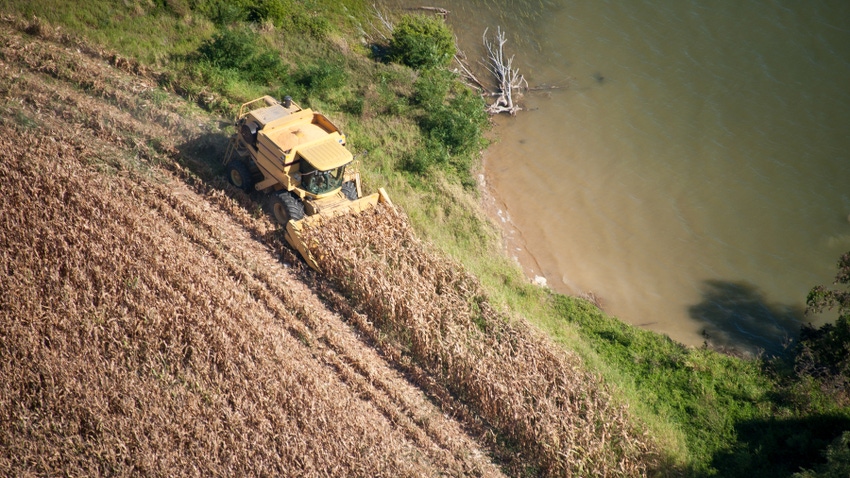April 5, 2023

A study by a Penn State-led research team suggests that “manureshed” management in the Susquehanna River basin could make a big difference in the water quality of the Chesapeake Bay.
The Susquehanna River delivers half the freshwater in the Chesapeake Bay and about 40% of the nitrogen pollution, 20% of the phosphorus pollution and a heavy load of sediment pollution. The majority — more than 60% — of the river’s pollution, according to the Chesapeake Bay Foundation, is attributable to excess manure, agricultural runoff, and urban and suburban stormwater.
“We believe that the manure runoff problem can be greatly diminished by managing the Susquehanna River as a manureshed,” says Cibin Raj, assistant professor of agricultural and biological engineering at Penn State. “Manureshed management guides the sustainable use of manure resources by matching areas of crop demand, nutrient sinks, with areas generating livestock manure, nutrient sources.”
At the heart of the Chesapeake Bay’s long-standing pollution problem is a severe nutrient imbalance that stems from corn and other feed transported primarily from the Midwest into the lower part of the watershed and fed to livestock. The manure those animals produce is mostly applied to a limited amount of land in the lower Susquehanna River basin.
Much of the nitrogen and phosphorus in that manure washes off the land and into streams and flows into the Susquehanna. It ends up in the Chesapeake Bay, fueling the growth of harmful algae blooms that block sunlight from reaching underwater grasses. When the algae decompose, the process creates low-oxygen “dead zones” that rob the water of oxygen and suffocate marine life.
The lower Susquehanna River’s nutrient problems have only gotten worse in recent times, according to the Chesapeake Bay Foundation. Over the past 30 years, in livestock-intensive counties of south-central Pennsylvania, annual hog manure production has nearly doubled from 635,029 tons to more than 1.2 million tons. During the same period, broiler chicken litter has increased 75% to more than 102,000 tons each year, and manure from dairy and beef cows has risen 16% to 3.5 million tons annually.
Livestock-intensive regions with limited cropland availability — such as Lancaster and Lebanon counties — experience long-term excess application of manure nutrients, causing buildup of legacy phosphorus in the soil and higher losses of agricultural nitrogen, Raj explains.
“If that manure would be transported to land higher in the watershed where crops need to be fertilized, the lower river and the bay would be healthier,” he says. “Pennsylvania is very much behind on meeting water-quality demands for the Chesapeake Bay, and we think managing the Susquehanna River as a manureshed is the way to move forward. However, presently there is no system or logistics for transporting manure higher in the Susquehanna River basin.”
Modeling a manureshed
To gain a better understanding of the effects of manureshed management on water quality in the Susquehanna River, the researchers developed a watershed simulation model of the river’s basin over the past few years in Penn State’s College of Agricultural Sciences, using the computer modeling program called the soil and water assessment tool — often referred to as SWAT.
They used the tool to quantify the potential water-quality benefits of manureshed-oriented management through scenario-based analyses in the basin.
Five manureshed-management scenarios were developed and compared with a baseline “business-as-usual” scenario. The baseline assumes manure is less transportable, which means some locations have manure application in excess of crop demand. The “watershed nutrient balance” scenarios assume excess manure from surplus locations is transportable and that manure is applied around the Susquehanna River basin, based on crop-nutrient demand.
In findings recently published in the Journal of Environmental Quality, the researchers reported that the “watershed nutrient balance avoiding runoff-prone areas” scenario — which assumes that manure is transportable but never applied in vulnerable landscapes in the basin (steep slopes mainly) — showed the largest potential water-quality gains.
The researchers found that phosphorus-based manureshed management — only applying the amount of manure crops need to supply their phosphorus demands — resulted in bigger water quality improvements than nitrogen-based management. In the scenario that avoids steep slopes for manure application, phosphorus-based nutrient balance scenarios simulated reduction in total phosphorus loss in excess of 25%.
With so many streams in the Susquehanna River basin under significant pressure to reduce nutrient loads to achieve the Chesapeake Bay total maximum daily load goals, manureshed management offers a way to achieve real progress for the bay, Raj says.
“Our modeling results indicate improved manure nutrient-use efficiency and significant water quality benefits with manureshed management,” he says. “The concept provides a new dimension to land management because it integrates crops and environmentally sustainable livestock development. It can be a successful strategy to reduce the agricultural nutrient contribution from the Susquehanna River basin to the Chesapeake Bay.”
Source: Penn State University
You May Also Like




